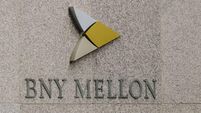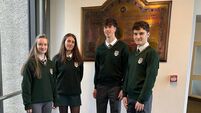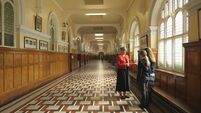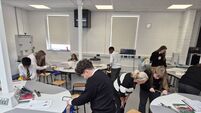Discovery of prehistoric settlement remains at Cork building site will result in less houses, developer says

Mr Michael O’Flynn said the discovery will ‘reduce’ the number of houses to be built on the site. “We are working with the archaeologist and the County Council. Part of the site will be excavated. Some of the site will have to reduce the number of houses to accommodate what seems like a very important find from thousands of years ago.
CORK developer Michael O’Flynn of O’Flynn Construction has said the recent discovery of a prehistoric settlement will result in six less houses being built on the site in Crosshaven.
The discovery was made earlier this week after developers discovered consists of possible enclosure, foundations of round houses and lots of post holes, pits and burnt areas on the site of a former residential unit on Church Bay Road, which is being demolished to make way for 99 new homes, The scene of the discovery is currently closed off for excavations to be conducted which will in turn provide a clearer picture of the settlement and activity of a large Bronze Age settlement.
Speaking to , Mr O’Flynn said the discovery will ‘reduce’ the number of houses to be built on the site. “We are working with the archaeologist and the County Council. Part of the site will be excavated. Some of the site will have to reduce the number of houses to accommodate what seems like a very important find from thousands of years ago.
Mr O’Flynn added there was no ‘advance’ warning of the discovery on the site in Crosshaven.
“It is an exciting find, but it is always costly on the owner of the property especially when there was no advance warning.”
A spokesperson for Cork County Council confirmed to that a prehistoric settlement was found by consultant archaeologist, Avril Purcell who was working for O’Flynn Construction.
“There was no evidence of the settlement in the field beforehand and so it is a new discovery. It was identified by the archaeologist through archaeological investigation - a geophysical survey and archaeological testing. The archaeological features identified consists of possible enclosure, foundations of round houses and lots of post holes, pits, and burnt areas. None of the features identified have been archaeologically excavated yet,” she added.
The spokesperson said the excavation of the features will give a ‘clearer’ picture of the settlement. “A certain extent will be preserved in situ (not excavated) and accommodated as a green area within development while other sections will be archaeologically excavated (recorded and removed) under licence from the National Monument Services.
The excavation of these features will give a clearer picture of the settlement and activity. Finds from the site were interesting including several pieces of Bronze age pottery and a saddle quern for grinding corn. The site is an exciting find as it gives us valuable information about our bronze ancestry who lived here in over 3000 years ago,” the spokeswoman added.







 App?
App?


